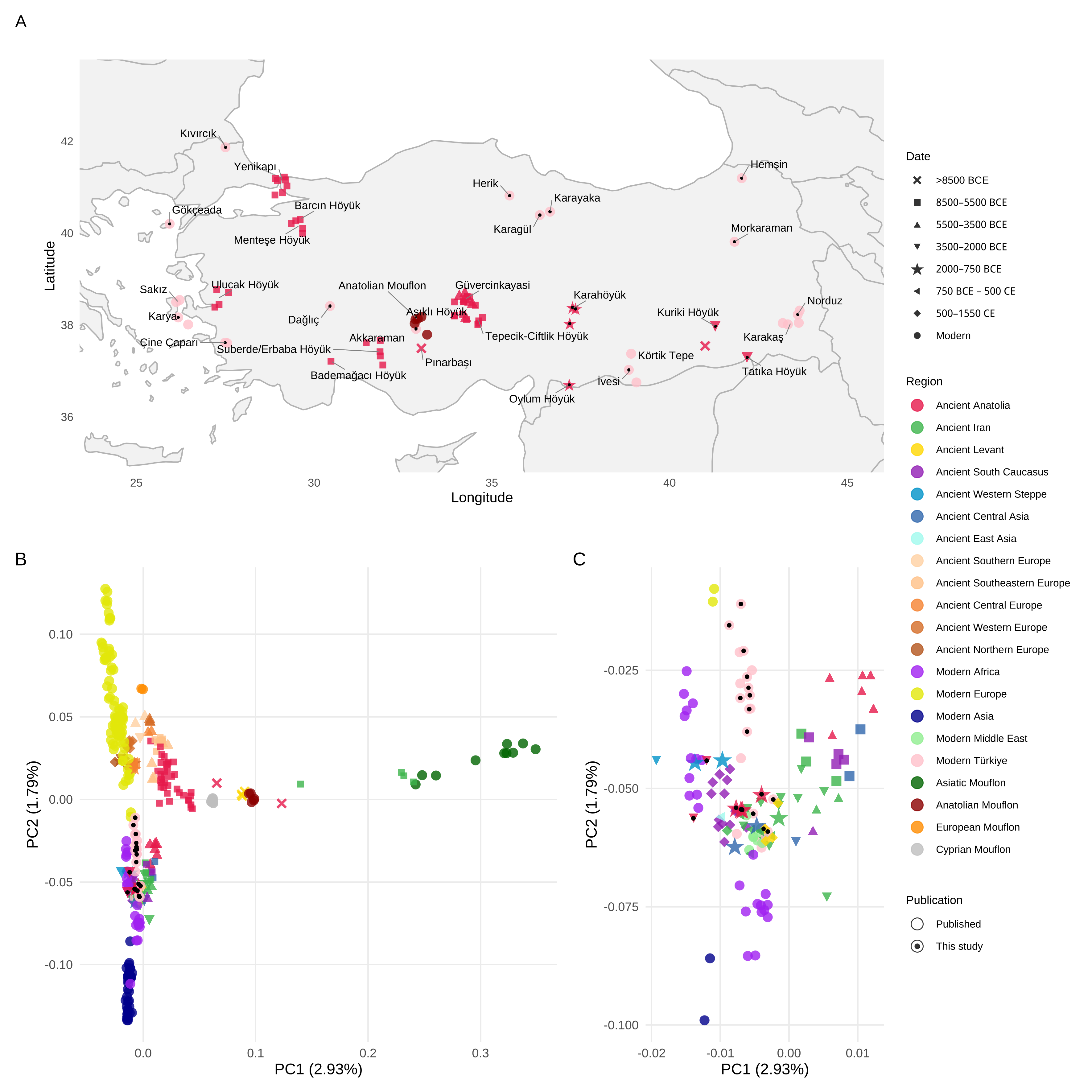M.S. Candidate: Muhammed Sıddık Kılıç
Program: Bioinformatics
Date: 07.07.2025 / 11:00
Place: A-212
Abstract: Anatolia has long been central to sheep domestication and spread, but it remains understudied at the genome-wide level, particularly during post-Neolithic periods. To illuminate the demographic history of Anatolian sheep, our research team generated six Bronze- and Iron-Age genomes from southeastern Anatolia (0.03x - 0.72x coverage), which represent the first genome-wide data from Anatolia dating after the Chalcolithic period, and 13 modern Turkish sheep genomes (0.22x - 3.3x coverage), some of which are the first genome-wide data for their breeds. Using this data, I first investigated whether eastern-related ancestry in sheep increased after the Neolithic, mirroring the post-Neolithic rise in Caucasus and Iran Neolithic–related ancestry observed in Anatolian humans, by combining newly sequenced data with published datasets. I found that Bronze- and Iron-Age Anatolian sheep showed even greater affinity to eastern populations than earlier Chalcolithic sheep, which were recently reported to have substantial eastern contributions, possibly indicating additional gene flow during those periods. We then examined the genetic legacy of ancient Anatolian sheep in present-day Turkish breeds. We observed a population structure that correlates with both geography and tail type. Fat-tailed breeds, most of which originate from eastern Türkiye, show greater genetic affinity to Iron-Age Anatolian sheep than thin-tailed breeds do. Conversely, thin-tailed breeds, mainly from western Türkiye, retain more Neolithic-like ancestry than fat-tailed breeds. This work helps us better understand the demographic history of Anatolian sheep over the past 8,000 years by tracing gene flows and revealing population structure.
